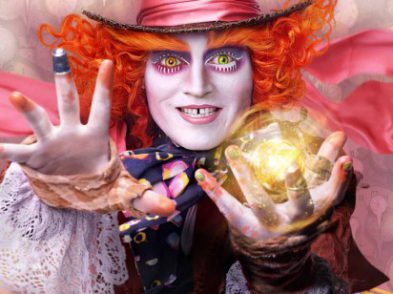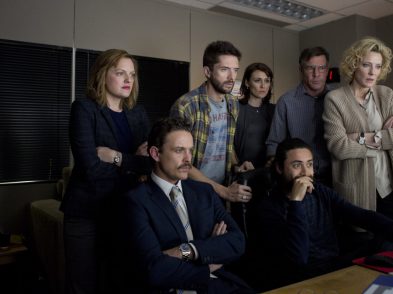In a series of articles, James Douglas, lecturer in Italian Cinema Studies for the University of Bristol History of Art Department’s Study Abroad Programme at the British Institute of Florence and regular contributor to The Florentine on matters cinematic, takes a look at some of the high-lights of post-War Italian cinema.
In this, the first of the series, he deals with probably the most important and influential contribu-tion Italian cinema has made to visual culture: Neo-Realism.
“So we’re in rags? Then let us show our rags to the world. So we’re defeated? Then let us con-template our disasters. So we owe them to the Mafia? To hypocrisy? To conformism? To irre-sponsibility? To faulty education? Then let us pay all our debts with a fierce love of honesty, and the world will be moved to participate in this great combat with truth.”
Alberto Lattuada (in Claretta Tonetti: Luchino Visconti, 1983)
Written after the disaster of the Second World War, the Italian director Alberto Lattuada’s rallying cry to the Italian public in general and Italian movie directors in particular is the manifesto of the movement that became known as Neo-Realism. It is a call for truth as an antidote to the hypoc-risy of Italian cinema during the Fascist years.
Because the Fascist regime ban-ned the importation and distribution of ‘anti-Fascist’ movies from Hollywood in the 1930s and 1940s, the local industry made up for the gap in popular commercial cinema by producing so-called telefono bianco films. The ‘white telephone’ had be-come an icon of sophistication and middle-class affectation in a swathe of turgid melodramas that mimicked those films Hollywood had been churning out in the years prior to the Fascist ban. (It is interesting to note that the Hollywood classic Casablanca, released in 1942, was not seen in Italy until 1946.) It was in 1946 that the backlog of American releases flooded the coun-try, having, in turn, a dramatic effect on Italian film culture.
So Lattuada’s appeal was perhaps nationalistic, certainly affirmative of a new film culture that paid attention to the realities of life rather than glossing over them by glamorising a lifestyle very few could aspire to. On the other hand, anti-escapism is a difficult product to sell. In the midst of genuine misery and social collapse, the public could hardly be expected to enjoy the new cine-matographic mirror being held up to them. The new school of directors’ devotion to truth trans-lated into a succession of movies that were unavoidably depressing, because of the reality they reflected. Although aesthetically rewarding, Neo-Realist films of the first period were not com-mercial successes, and it is only in retrospect that the compassionate humanity they expressed was recognised and appreciated around the world.
One of the movement’s greatest protagonists, director Roberto Rossellini, stresses the moral as opposed to the aesthetic position of the new movement: ‘Neo-Realism is a response to the genuine need to see men [people] for what they are, with humility and without recourse to fabri-cating the exceptional; it means that in looking at reality you find the exceptional’ (Cahiers du cinéma 37, July 1954). Countless other writers have theorised on the subject, but in essence Neo-Realists see the world with the innocence of those who have neither the means nor the will to aspire to grandiose spectacle, nor the desire to provide romantic-escapist entertainment.
The tenets of the Neo-Realist aesthetic were that characters derive from the audience’s own re-ality; actors are (mostly) non-professional, their language and dialect are natural. Stories are not pre-fabricated via literature but come from the daily existence of ordinary people. Situations are contemporary concrete social realities, like the poverty and unemployment that was widespread in post-War Italy. The style of cinematography was almost documentary, concentrating on ob-servation–hence location shooting (no papier-mâché sets); lighting is natural, or harsh and grim; camera movement is free, often hand-held (post-synchronisation of sound made this possible). There had to be a sense of detail to authenticate the ‘slice of life’ being portrayed.
If these are the essential characteristics of Neo-Realist cinema, it should be possible to draw up a canon of representative works. This is no easy undertaking, however, since variations from the norms and pre-requisites exist in almost every film regarded as Neo-Realist. The canon is surprisingly small for such a major movement in cinema history, and spans a fairly brief period basically from 1942 to the mid-1950s. An essential Neo-Realist viewing (a subjective selection, and, of course, subject to dispute and revision) includes the following ten classic movies:THREE FROM LUCHINO VISCONTI (1906-1976): OSSESSIONE (1942)Visconti’s ‘pre-make’ of James Cain’s novel The Postman Always Rings Twice, relocated to the Po River Valley, which explores the squalid collusion of a drifter and a frustrated young wife, and the murder of her much older husband for his life insurance. (A cardinal rule of Neo-Realism broken at once!)LA TERRA TREMA (1948)His brilliant poetic ‘documentary’ on the communal lives of Sicilian fishermen and their collec-tive struggles against big business interests and the elements.ROCCO E I SUOI FRATELLI (1960)A memorable blend of melodrama and Neo-Realism. The controversial (and at the time, sensa-tional) story of five southern Italian migrant brothers as they adapt to the northern industrial city of Milan and are pulled in different directions by the complex realities of urban living.THREE FROM VITTORIO DE SICA (1902-1974):SCIUSCIA’ (1946)A moving tale of two Roman street boys, ‘shoeshiners’ (hence the Italianised title), who unwit-tingly become embroiled in the theft of a horse and sent to reformatory where their grim exis-tence is made even grimmer by deception and betrayal. (A box office disaster in Italy; a triumph in the US.)LADRI DI BICICLETTE (1948)The Neo-Realist classic, considered a great masterpiece of world cinema. De Sica, inspired by a brief newspaper article about the theft of a worker’s bicycle in Rome, works an affecting father-and-son story of desperation and humiliation into an uplifting and genuinely heart-rending movie experience teetering on the edge of sentimentality.UMBERTO D. (1951)A real tear-jerker, this one: a retired civil servant, unable to live on his pension and drowning in debt, descends into misery and despair and is saved from suicide by his beloved and devoted dog, Flike. This was the film that Giulio Andreotti, then Minister for Entertainment, suggested was Italy washing its dirty linen in public, threatening a withdrawal of funding and calling for a return to more crowd-pleasing escapism.THE ‘WAR TRILOGY’ FROM ROBERTO ROSSELLINI (1906-1977)ROMA, CITTA’ APERTA (1945)The dramatic and shockingly vivid account of the Nazi occupation of Rome (1943-44) with the embattled Resistance pitted against the cruelty and malice of Nazis and Fascist collaborators. The death of Pina (Anna Magnani) is one of the key moments in all Italian cinema and has an enduring resonance.PAISA’ (1946)Rossellini’s six-part ‘docudrama’ chronicling the advance of the Allies up the boot of Italy, start-ing in Sicily and finishing in the Po delta. The Florence episode (the 4th) is the story of an Eng-lish nurse desperately trying to locate her Italian Partisan lover in the crossfire across the Arno.GERMANIA ANNO ZERO (1947)Set in Berlin at the end of the war, this grim and harrowing movie underscores the catastrophe that war is and its effect on the innocent in the form of Edmund, possibly the saddest casualty of war you’ll ever see in the cinema. Only for the stout-hearted.AND ANOTHER:GIUSEPPE DE SANTIS’ RISO AMAROSet in the rice fields of the Po Valley, where seasonal women workers are shipped in from all over Italy and where passions run high when competition for male companionship stirs up jeal-ousy and revenge.
The director Gianni Amelio said: I believe that it was this that was the emotive thrust of Neo-Realism: the fact of telling stories by pressing and squeezing the essence out of things. (Con-versazione con Goffredo fofi: amelio secondo il cinema 1994).
He is right. Neo-Realism is essentially that: minimum artifice, maximum emotion. If you can stomach the hard reality of black-and-white lives of poverty and despair, social injustice and deprivation, the remnants of war-torn civilisations, but at the same time celebrate the survival of the human spirit in the most adverse conditions, the sense of communality that makes individ-ual suffering just about bearable, Neo-Realism will be as rewarding as truth itself.







